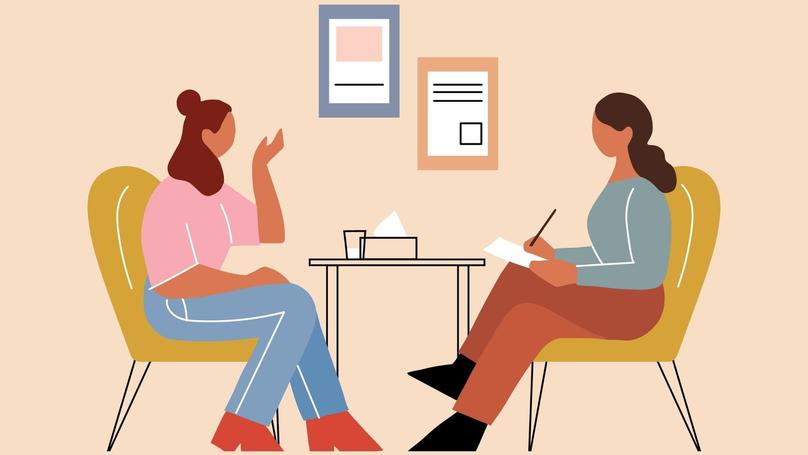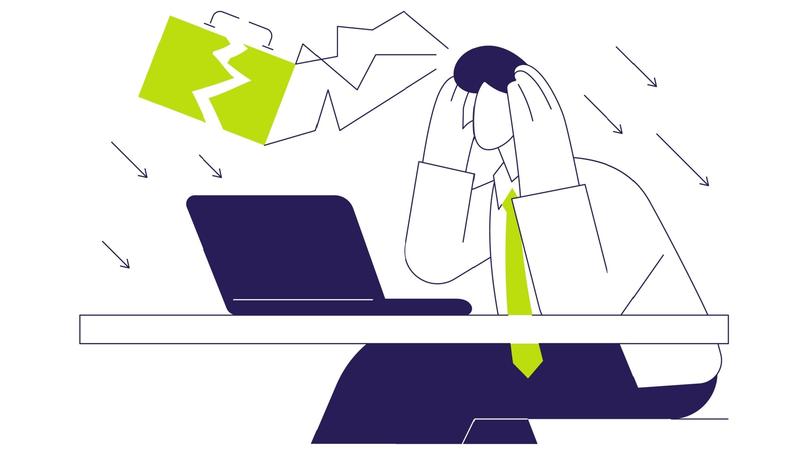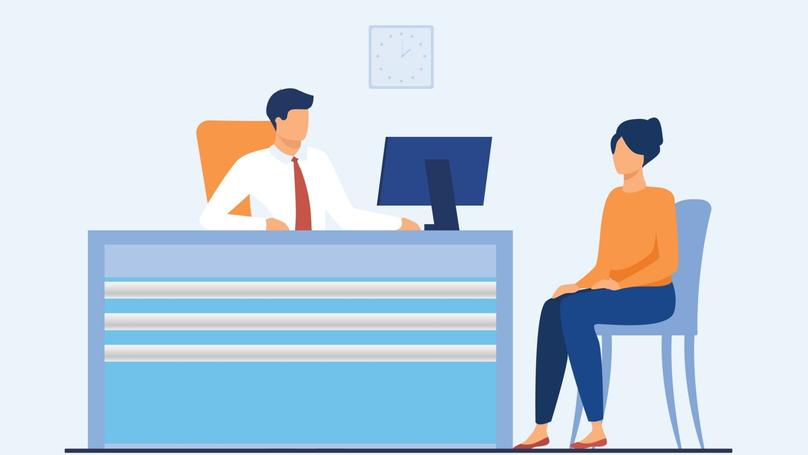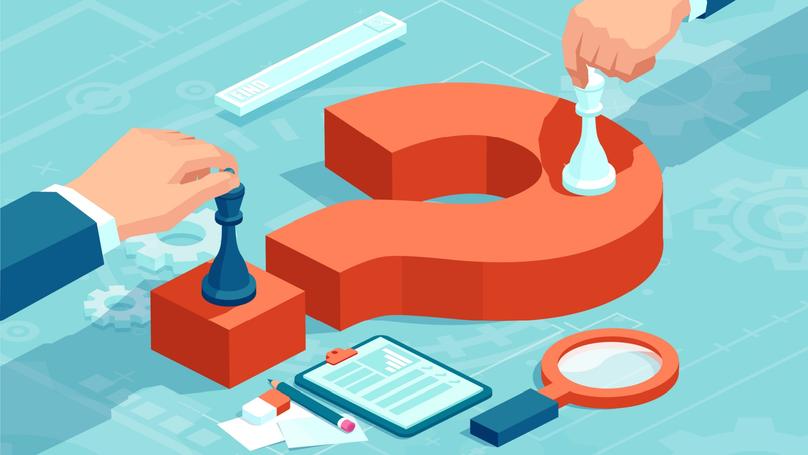Problem interview

What is a problem interview?
A problem interview is a valuable marketing tool for uncovering your target audience's real needs and wants, understanding their buying motives, and identifying their criteria for choosing particular products and their reasons for purchasing something. By conducting problem interviews, you can delve into customers' issues, find relevant solutions, develop products that meet consumer demand, and continuously enhance your services.
A problem interview is a crucial component of the Customer Development approach. It involves gathering feedback from users or consumers to understand precisely what they want in a product or service. This method provides valuable insights that can help increase sales conversions. The core principle of Customer Development is that customers are the company's most important asset, not the product itself. Therefore, building a trusting relationship with your target audience is crucial before developing and refining your product or service.
What other interviews are there?
A problem interview is considered a subtype of in-depth interviews, a form of qualitative research in marketing. It involves conversing with one or more representatives of a brand or the product's target audience. Besides problem interviews, other types include:
-
Decision interview
-
Expert interview
A decision interview, by definition, aims to determine if your product is beneficial to the consumer and if they are willing to purchase it. This type of in-depth interview often concludes with a sale. Therefore, showcasing a prototype, landing page, or presentation is vital during the conversation. Following this, you can ask if the respondent is ready to buy the product immediately. At this stage, buyers are still in the testing phase. Alternatively, you can request that the respondent discuss the product or service on social media instead of making a sale, mentioning the brand, or leaving a review. A decision interview can be conducted independently or as part of a problem interview.
An expert interview involves conversing with specialists in the field related to your product. These interviews are conducted with experts who understand the market, the needs, and the financial habits of potential shoppers. During an expert interview, you can discuss competitor solutions, target audience issues, trends, and possible communication and promotion channels for your product. This in-depth interview can provide unexpected insights that potential consumers need to be made aware of.
It is advisable to conduct at least two types of in-depth interviews-for example, a problem interview with potential shoppers and an expert interview with knowledgeable specialists-to gather a wide range of valuable and helpful information.
Who is a problem interview conducted for?
This detailed and typically lengthy interview helps uncover what customers expect from your product or its new version, the price they are willing to pay, the desired features, and more. Therefore, a problem interview is highly recommended for startups and MVP development.
However, this tool is also valuable for established, rapidly growing businesses. It can explore new directions, launch new product lines, or increase the average transaction value. Consequently, marketers and product managers who promote goods and services frequently conduct problem interviews. This approach enables developers and specialists responsible for bringing new products to the market to devise solutions that truly meet user needs.
Put simply, a problem interview allows representatives of the company's target audience to voice their challenges and frustrations, suggest solutions, and feel heard. Simultaneously, these interviews are essential for businesses and manufacturers to develop highly relevant and in-demand products that customers will actively purchase.
How to conduct a problem interview

Before conducting the interview, it's essential to prepare thoroughly. It's best to divide this process into several stages:
Stage 1. Defining a hypothesis
Remember that the interview's primary objective is to determine whether the target audience representative has an unmet need that your product can address. If such a need exists, you need to identify it. You might already have some ideas about this, which are considered hypotheses. These hypotheses must be confirmed or refuted during the problem interview.
Hypotheses are developed based on the analysis of available data. The "Jobs To Be Done" approach is often used to formulate these assumptions. This approach involves understanding the various purposes for which buyers use your product. For instance, one customer might use your social network for communication, another for blogging and sharing life stories, and a third for promoting their services, selling advertising, and earning money. The more reasons you identify for why users register on your social network and their goals, the higher the likelihood of meeting all their needs and creating a unique product that appeals to a broad audience. Hypotheses are used for this purpose and can be adjusted during the conversation. They are either confirmed or refuted as a result. If a hypothesis is correct, you can develop a product that addresses users' problems or satisfies the needs of each audience segment. If the theory is refuted, you should continue researching and formulate a new assumption.
Stage 2. Compiling a list of questions
Key points to uncover during the interview:
-
The customer's needs and wants;
-
The challenges and obstacles they encounter;
-
How they currently address these problems;
-
Are they satisfied with the existing solutions, and if not, why?
-
How the situation can be improved.
It's crucial to ask open-ended questions that require detailed, comprehensive answers rather than just "yes" or "no." These questions often start with phrases like "why," "what do you think," or "what if…". However, suppose the conversation veers off track, and the interviewee strays from the topic. In that case, you should make your questions more specific, ask follow-up questions, and seek clarification. Therefore, staying attentive throughout the conversation and guiding the customer effectively is essential.
Stage 3. Picking interview participants
Depending on whether you already have a customer base or are starting a business from scratch, you need to decide who will participate in the interview. If you know your regular customers, you can survey them through email newsletters, social media, or phone calls. Suppose you are working on attracting a potential audience. In that case, you must create a profile for each segment and engage customers through forums, lead magnets, advertising campaigns, loyalty programs, master classes, and other methods.
Stage 4. Conducting an interview
At this stage, recording the respondents' answers, for instance, using a voice recorder, is crucial. Aim to gather as many details as possible from each interview participant, including any nuances that concern them and other features they notice when using the product.
Stage 5. Analysing data and evaluating your hypothesis
After conducting interviews, organise the data, identify patterns in the respondents' answers, and analyse any differences to understand their causes. This process will reveal whether the initial hypothesis was correct or flawed. If your assumption was incorrect, follow the same steps, starting from the first stage, and formulate a new theory.
General recommendations

To gain the most comprehensive and accurate understanding of your target audience, it's essential to follow these guidelines for conducting a problem interview:
-
Clearly and unambiguously formulate your hypothesis
Your initial assumption should be specific to avoid any ambiguity or additional questions. Remember, a hypothesis can be confirmed or refuted with a simple "yes" or "no." Therefore, frame your assumption as straightforward, starting with "Is it true that…?"
-
Do not drag out the interview
The conversation should be at least an hour, with an optimal duration of 30-40 minutes. Rushing may result in incomplete information and hinder establishing a trusting relationship with the interviewee. Conversely, suppose the conversation lasts longer than an hour. In that case, the respondent is likely to become fatigued, less able to articulate their position, and may unconsciously wish to end the conversation quickly.
-
Use the "Five Why's" technique during the interview
This method explicitly explores the cause-and-effect relationships underlying a particular problem. The main objective is to identify the root cause by repeatedly asking the question, "Why?" For each respondent's comment and insight, consistently ask "Why?" five times. Why five times? This number is empirically chosen and is generally sufficient to uncover the root cause of the problem. For instance, if the interviewee mentions dissatisfaction with long delivery times, ask why this factor is critical to them.
One key benefit of the "Five Why's" technique is its straightforwardness and adaptability. This method is simple to implement and applicable across various fields. It helps you concentrate on the core issue without wasting time.
-
Speak less, inquire more
The key is to allow the respondents to express themselves fully, gathering as much valuable information, insights, and suggestions as possible. To achieve this, it is crucial to ask follow-up questions and clarify the customer's experiences, details, and context. Interviewing with a colleague can enhance the process, as they can provide support, ensure timely progression to the following questions, and keep track of the timing.
-
Use scripts with mandatory questions
A script serves as a ready-made template, providing a simplified scenario for communication between a manager and a customer. It standardises the interaction process with the target audience, helps predict client behaviour, and ensures the conversation achieves its goal. While questions in a script for a problem interview can vary based on the topic, there are some universal ones to include at the end, such as: "Is there anything I forgot to ask?" and "Who else do you recommend talking to?" These questions should be asked at the conclusion, allowing the respondent to share valuable information that the interviewer might not have considered.
What are some sample questions for a problem interview script?

First and foremost, ensure that the respondent is representative of the target audience and the desired segment, meaning the interviewee should be chosen wisely. After that, proceed with the script:
- "Could you tell us for what purposes you use our product and how frequently you need it?" This question helps the respondent engage in the conversation, articulate their reasons for purchasing the product or service, and explain their motivation.
- "Could you share your experience addressing a specific need and what steps you take to do so?" The response to this question will provide initial information from the respondent and help establish contact.
- "Do you encounter any difficulties in meeting this need?" Typically, the response to this question will highlight a list of problems that consumers face. Documenting this information and asking 5-7 follow-up questions for each identified issue is crucial.
- "How often does this occur, and when was the last time it happened?" It's essential to confirm that this problem is indeed common.
- "In what situations or circumstances do you typically encounter this issue?" This question helps uncover the context and essential details.
- "Can you explain why this is a problem for you and what the difficulty is?" This question encourages the respondent to provide a thorough answer, offering practical insights. It prompts them to reflect on their deeper motivations and articulate the issue's core.
- "What are the consequences of this problem?" This question helps justify the issue's relevance and clarify important details.
- "What emotions and feelings do you experience when encountering this difficulty? Please rate the intensity of these feelings on a scale from 1 to 10." This assessment will help you to understand and prioritise the various problems associated with a product or service, identifying which issues must be addressed first.
- "Have you attempted to solve this problem on your own?" This question helps determine the problem's relevance to the consumer. If they have yet to try to address it, the situation might be acceptable or not require an immediate solution.
- If the respondent attempted to resolve the issue, it's essential to ask, "Were you able to solve the problem yourself? What do you dislike about these methods?" This helps clarify how the person deals with difficulties.
- One of the concluding questions is, "Is there anything else you would like to share with us?"
- Finally, "Who else would you recommend we discuss this problem with?"
This is a universal script; however, the questions can vary and be supplemented with additional clarifying ones depending on the specific product or service being discussed.
Conclusion
Therefore, conducting a problem interview is an effective and cost-efficient method of better understanding your target audience, addressing real consumer issues, and enhancing your product's market position. Additionally, it helps minimise risks during the development stage, eliminate unnecessary features, reduce costs, and ultimately create a competitive and successful product or gather essential information for launching a startup.























